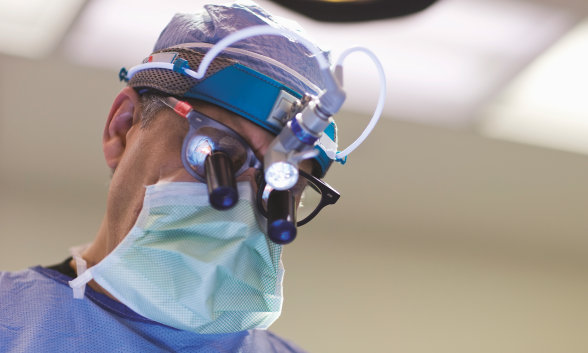
When skill alone isn’t enough, the right set of surgical tools can save lives. Beyond scalpels and forceps, surgeons stock their supply cabinets with a variety of devices meant to assist in their regular operations. These 3 versatile medical devices are useful additions in most operating rooms.
Surgical Headlights
Adequate lighting is one of the essential elements of any operating room. The right type of lighting reduces strain on the eyes of surgeons and their medical staff while providing enough brightness to clearly view internal structures during procedures.
Lux is the unit of measurement that describes the direct illumination provided by a light source. On a clear, sunny day, the sun typically emits roughly 10,000 lux. Surgical stations that are illuminated between 2000 and 20,000 lux allow surgeons to operate efficiently during long procedures without risking eye fatigue or experiencing shadows that cause confusion. Higher illumination levels are available to fit individual preferences. It is important to note, however, that LED headlights often cast a slightly bluish light which can interfere with certain types of surgical procedures.
A variety of surgical headlights allow surgeons to manipulate the light in a way that uniquely suits their needs. Headlights can be mounted on mechanical arms that rotate in multiple directions to achieve ample light coverage on the area of concentration. These simple medical devices protect the eye health of operating doctors and ensure optimal results for the patient.
Bioelectronics
As computer science continues to evolve, physicans and medical researchers are finding new ways to apply electronics to medical care. The budding field of bioelectronics is one of the most recent applications to come from this pursuit. These devices use electrical current to stimulate internal tissues for specific effects.
Newly developed devices are currently avaialbe that assist surgeons provide high-quality care in a variety of ways, including:
- Devices that read, measure, and record bioelectric signals between nerve cells.
- Alter signals to disrupt the transmission of pain signals during operations.
- Sensor technology to keep track of patient condition throughout procedures.
- Robotic apparatuses that can be pre-programmed to complete intricate procedures like sutures and incisions.
- Tracking devices that help maintain the health of cleanrooms and operating spaces.
Bioelectronics isn’t an entirely new field. Devices like pacemakers and glucose monitors are well-known devices that enjoy widespread use throughout the indsutry. However, the new generation of bioelectronic devices are smaller and allow surgeons to focus their effects on specific tissues. Surgical implantation of new-age bioelectronics give surgeons the opportunity to provide long-term and effective relief from a number of chronic conditions, such as:
- Chronic pain that is unresponsive to more traditional therapies.
- Epileptic conditions.
- Tremors and muscle loss related to Parkinson’s Disease.
- Inflammatory conditions like osteoarthritis.
Ingestible biolectronic devices are currently in development. Researchers believe these tools will decrease the need for some invasive surgical while still maintaing optimal health for the patient. With bioelectric devices, doctors can help patients increase their quality of life and position themselves as leaders in their specialty.
Mobile Monitoring Applications
During the recovery period, surgeons need constant updates on their patient’s condition. This allows them to respond appropriately if complications are detected.
While smartphones and other internet-connected mobile devices aren’t specifically built for medical purposes, there are a variety of mobile applications that can positively impact a surgical practice. With the increasing availability of mobile applications, physicians can now keep a close eye on their patients’ stats and symptoms from almost any mobile computing device. There are a number of important advantages to using mobile monitoring applications and devices in surgical settings.
- Smartphone-based applications allow surgeons to quickly respond to messages or send vital instructions to their team when stats reach dangerous thresholds.
- Camera and recording capabilities let surgical teams share more accurate information, which allows surgeons to make better decisions when they can’t physically observe patient condition themselves.
- Built-in web browsing capabilities make it possible to quickly research medical records for details that make emergency response more effective.
- Additional information sources like medical texts and diagnostic aids simplify emergency intervention and allow a faster response to patient distress.
Surgeons can also use monitoring applications to compile, organize, and share patient notes with other authorized medical personnel.
According to a study from the US National Library of Medicine National Institutes of Health, physicians who use mobile applications in their practices realize improvements in clinical decision-making and patient outcomes.
The Future of Medical Devices for Surgeons
Medical research involving electronics and internet capabilities are at the forefront of future surgical technology. However, more basic elements like lighting and environmental controls are still an essential part of providing high-quality medical care. Surgeons who adopt these 3 medical devices into their practices can improve their professional reputations while providing better patient outcomes.






